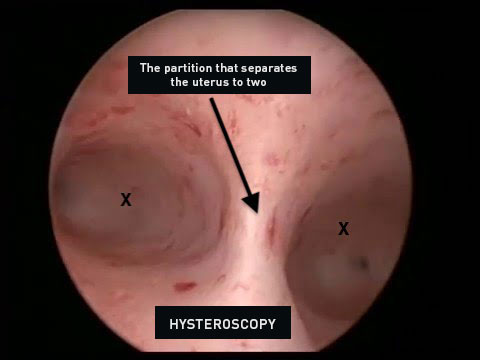A uterine septum does not usually affect a woman's ability to become pregnant, but it does significantly increase the risk of miscarriage. Women with a uterine septum may also have repeated miscarriages. The problem is usually continuing the pregnancy and not getting pregnant.

In women who know they are pregnant, the miscarriage rate in the general population is 10 to 20 percent. The miscarriage rate in women with uterine septum is estimated to be 20 to 25 percent. Some studies show it can be as high as 40 percent. A uterine septum is the most common uterine abnormality. Women with uterine septum have an increased risk of miscarriage and recurrent miscarriage. Pregnancies that occur in a uterus with abnormal development increase the risk for the following:
- premature birth
- breech birth
- increased rate of cesarean delivery
- bleeding complications after delivery
How to recognize a uterine septum?
A uterine septum has no symptoms other than miscarriage or recurrent miscarriages. It is usually diagnosed only after an investigation into the cause of miscarriages. If the septum extends beyond the cervix and involves the cervix and vagina, it can sometimes be detected during a routine pelvic exam. It usually does not cause symptoms such as menstrual irregularities or pain.
Causes
Uterine septum is a congenital genetic anomaly. The causes for the occurrence of this anomaly are not known. It develops in the womb during embryonic development.
How is it diagnosed?
The diagnosis can be made by a standard ultrasound of the pelvis. However, 3D ultrasound or MRI (magnetic resonance imaging) can more accurately detect problems in the uterus. After a pelvic exam, your doctor will likely start with one of these tests. To confirm the diagnosis, the doctor may perform a hysterosalpingogram or hysteroscopy.

Treatment
A septate uterus can be treated with an operation called metroplasty. The procedure is performed by hysteroscopy. The hysteroscopic procedure allows treatment inside the uterus without the need for an external abdominal incision. During hysteroscopic metroplasty, a lighted instrument is inserted into the vagina, through the cervix and into the uterus. Another instrument is also inserted to cut and remove the septum. This technique is minimally invasive and usually takes about an hour. Women who choose to have hysteroscopic metroplasty can usually go home the same day as the procedure. After the procedure, 50-80% of women who have a history of repeated miscarriages are able to have a healthy pregnancy in the future. Up to 20% of women who cannot conceive, become pregnant after the procedure.
*If the patient does not want to have children, this condition does not need to be treated. By itself, it does not pose a health risk. However, if the patient with uterine septum wants to have children, she may choose to have surgery. Surgery significantly increases the chances of a successful pregnancy.




